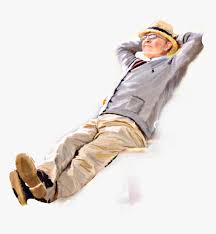Post by Beekster on Dec 27, 2017 14:49:20 GMT -6
Since I mentioned dimensional errors in my thread on my completed TD builds, and now that I have Tamiya kits in hand, I thought I would elaborate on the issues involved. Here is an overhead shot of the three hulls: AFV Club on the left, Tamiya in the middle, and Academy on the right:

Let's start in the middle. The Tamiya hull is the most accurate, according to Ordnance drawings from the period and other reviewers who have measured against them. My calipers measure it at 3.444" across, give or take a few thousandths for material flex. The width of the top deck is 2.491". The shape of the driver's hatches is also accurate, with the pronounced curvature near the base of the turret ring bullet splash rail.
AFV Club's hull measures 3.437" at the widest, so slightly narrow though again there's a touch of material flex to account for. The deck, however is 2.551" across. That's 60 thousandths wider than Tamiya, or 2.1 inches. This makes the hull side angle steeper than it should be, and makes the hull seem a little too tall. The driver's hatches show very little curvature and are a little undersized.
Academy's hull is simply a mess. At 3.339" across, it is 3.675 scale inches too narrow. The deck width is 2.500" inches, which isn't too far off, but the combination really throws off the angles and the hull appears too tall and too narrow. The shape of the hatches is very wrong, with an angle and not a curve at all.
I can't compare turrets directly, since my AFV Club hull comes from an M36 and the Academy one from an Achilles with the duckbill counterweights. But previous comparisons by Steve Zaloga have shown the Academy turret too narrow, which is unsurprising since the overall width is narrow and the turret was designed proportionately. AFV Club's turret was somewhat squished vertically, and the shape and size of the forward roof on both Academy and AFV Club is wrong in different ways. Tamiya pretty much nails it; the turret might be a smidgen wide at the back but it is impossible to notice.
Considering that they can be had for about $35 online, the Tamiya kit is the clear winner here. The lack of a driver's compartment is a serious omission, but you can pick up an Academy kit cheap at a show and rob it of the necessary parts. Better yet, cut up and build up the Academy parts to make master patterns and cast copies in resin to fill out all your Tamiya kits. Tamiya gives you the common wedge counterweight, but fashioning the earlier brick style is simple and so is mounting grousers back there, as was done initially to try to offset the imbalance in the turret that hindered traverse when on a side slope. Recall that these TDs all had manual traverse, not powered. We can hope that Tamiya gives us an M10 17pdr with the duckbill counterweights, since doing that conversion would be rather involved. The shape of the side plates is different at the back, and the entire rear section is angled differently. AFV Club is probably the better donor for the duckbills if you want to try this, but you would be wise to get a copy of the Ordnance drawings (wish I had them) so that you can scale your new parts and altered sides properly. Converting to an M36B2 should be pretty straightforward. The AFV Club turret is the one to use, after you extend the bustle. The Italeri one isn't awful from a shape standpoint, but the detail is really below par. Converting the Tamiya to an M10A1 or M36 is also possible, though the easiest way forward might be to graft the upper hull onto a Tasca/Asuka M4A3 lower hull after altering the engine deck. I suspect this might be easier than carving off the access plates on the bottom and replacing them, along with fitting an M4A3 lower rear hull with door and exhaust in place of the diesel bits.

Let's start in the middle. The Tamiya hull is the most accurate, according to Ordnance drawings from the period and other reviewers who have measured against them. My calipers measure it at 3.444" across, give or take a few thousandths for material flex. The width of the top deck is 2.491". The shape of the driver's hatches is also accurate, with the pronounced curvature near the base of the turret ring bullet splash rail.
AFV Club's hull measures 3.437" at the widest, so slightly narrow though again there's a touch of material flex to account for. The deck, however is 2.551" across. That's 60 thousandths wider than Tamiya, or 2.1 inches. This makes the hull side angle steeper than it should be, and makes the hull seem a little too tall. The driver's hatches show very little curvature and are a little undersized.
Academy's hull is simply a mess. At 3.339" across, it is 3.675 scale inches too narrow. The deck width is 2.500" inches, which isn't too far off, but the combination really throws off the angles and the hull appears too tall and too narrow. The shape of the hatches is very wrong, with an angle and not a curve at all.
I can't compare turrets directly, since my AFV Club hull comes from an M36 and the Academy one from an Achilles with the duckbill counterweights. But previous comparisons by Steve Zaloga have shown the Academy turret too narrow, which is unsurprising since the overall width is narrow and the turret was designed proportionately. AFV Club's turret was somewhat squished vertically, and the shape and size of the forward roof on both Academy and AFV Club is wrong in different ways. Tamiya pretty much nails it; the turret might be a smidgen wide at the back but it is impossible to notice.
Considering that they can be had for about $35 online, the Tamiya kit is the clear winner here. The lack of a driver's compartment is a serious omission, but you can pick up an Academy kit cheap at a show and rob it of the necessary parts. Better yet, cut up and build up the Academy parts to make master patterns and cast copies in resin to fill out all your Tamiya kits. Tamiya gives you the common wedge counterweight, but fashioning the earlier brick style is simple and so is mounting grousers back there, as was done initially to try to offset the imbalance in the turret that hindered traverse when on a side slope. Recall that these TDs all had manual traverse, not powered. We can hope that Tamiya gives us an M10 17pdr with the duckbill counterweights, since doing that conversion would be rather involved. The shape of the side plates is different at the back, and the entire rear section is angled differently. AFV Club is probably the better donor for the duckbills if you want to try this, but you would be wise to get a copy of the Ordnance drawings (wish I had them) so that you can scale your new parts and altered sides properly. Converting to an M36B2 should be pretty straightforward. The AFV Club turret is the one to use, after you extend the bustle. The Italeri one isn't awful from a shape standpoint, but the detail is really below par. Converting the Tamiya to an M10A1 or M36 is also possible, though the easiest way forward might be to graft the upper hull onto a Tasca/Asuka M4A3 lower hull after altering the engine deck. I suspect this might be easier than carving off the access plates on the bottom and replacing them, along with fitting an M4A3 lower rear hull with door and exhaust in place of the diesel bits.






